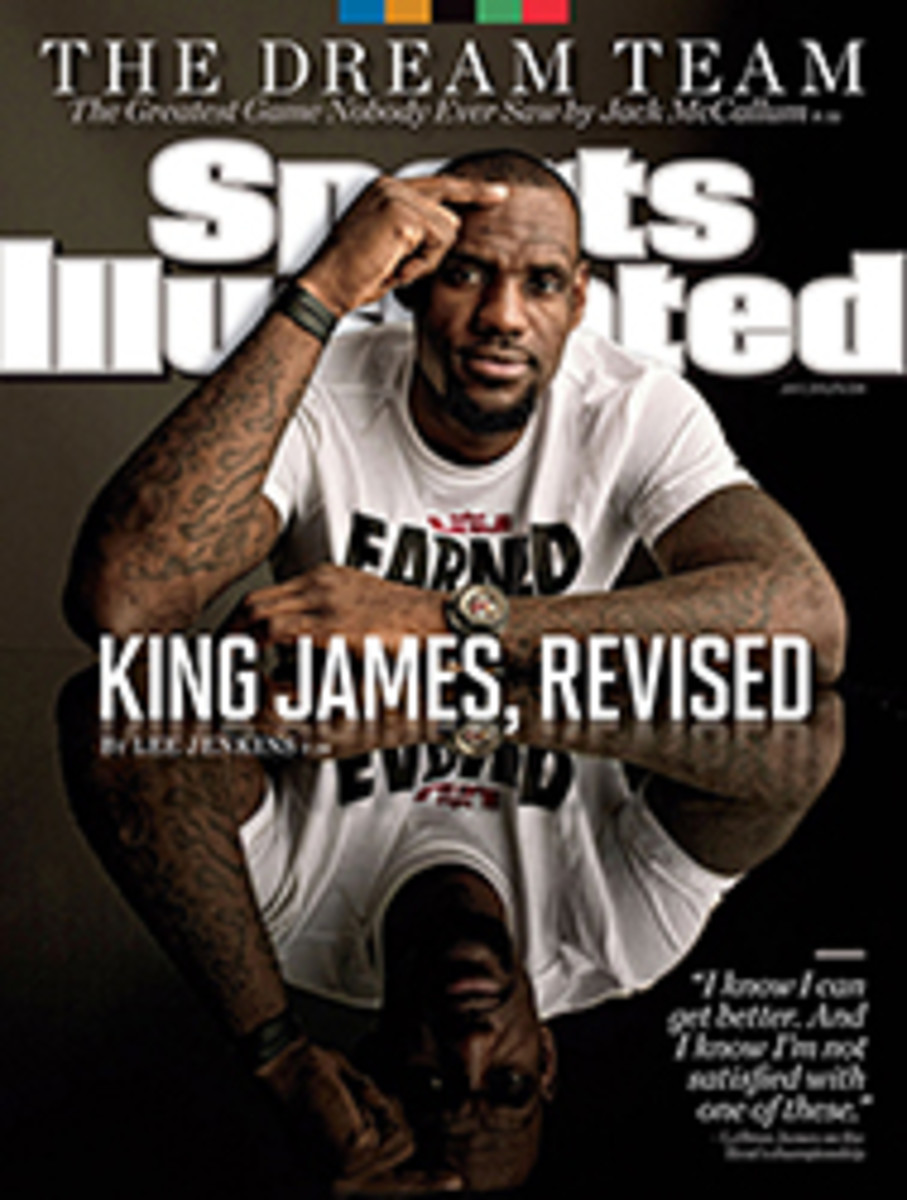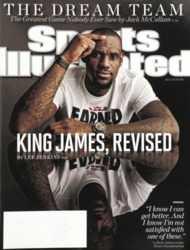
Ringing Moment On Centre Court
For those of us who like our Summer Olympics lean and our tennis calendar classic, the quadrennial rite of hype and glory always disappoints. Tennis doesn't belong here, we insist every four years, and then the world proves us right by ignoring it. And why not? Winning gold hardly confers greatness—unless you consider Marc Rosset and Nicolas Massu all-timers—and majors aside, there are 14 other tournaments this year that count more in the rankings than the London Games.
"I don't think any player feels it's the same level, certainly, as a Slam [event]," says John McEnroe. "You know the points you get for winning the Olympics is less than the points you get for winning Madrid?"
Yet, of all people, McEnroe should know that this time the usual math can't apply. Because these Olympics will be held at Wimbledon, where his superbrat persona found its perfect foil and his talent, epitomized in his epic finals against Bjorn Borg, found its perfect expression. Wimbledon made him, as it makes every tennis god; Wimbledon, 19 years older than the modern Olympics, bestows a legitimacy that few settings can match. And it's the main reason why for the first—and perhaps only—time, tennis at the Olympics makes all the sense in the world.
The other? It's no accident that Novak Djokovic of Serbia and Rafael Nadal of Spain will serve as their nations' flag bearers in the opening ceremony—and that Roger Federer is an odds-on favorite to do likewise for Switzerland. If the Olympics are indeed the showcase for the planet's best athletes, it's only right that the three who've pushed the men's game to an unprecedented height be out front. The swirl atop the tour is now producing the highest quality, most riveting tennis ever. Other sports, Olympic and non-Olympic, have had their golden age, all in decades past. In tennis that time is now.
Consider: Federer, with his 16 Grand Slam titles, is the best ever, yet he can't solve Nadal, who in 2011 couldn't solve Djokovic. Then the latter two upped the ante further in the 2012 Australian Open final by hitting the ball harder, at a higher level, for longer than it had ever been hit in history.
Djokovic won that tournament too, and before Nadal stopped him last month in Paris, he was gunning to become the first man since Rod Laver in 1969 to win four straight majors. But the standard-setter that Djokovic fell short of matching, the only man to have won the Grand Slam twice, says that everyone had it backward. "This is the highest level," Laver says of today's game. "It's incredible what today's players are doing."
It turns out that Federer and Nadal's face-off in the 2008 Wimbledon final, hailed by many as tennis's greatest match, was just the beginning. Djokovic's rise in 2010, fueled by Plastic Man court coverage and a concussive defense, pushed Nadal and the rest of the tour to reconsider the possible. Hence the mind-bending rallies, the winners off shots that would have once been deemed dotty, the sight of players retrieving beyond the doubles alley, the fact that more and more the game's rectangular bounds are being stretched into something near circular.
"They're fitter, stronger, and certainly they're taller, and they've just perfected what you can do with these rackets and strings," Laver says. "It's uncanny: Every ball is within a foot of the baseline. You just feel like, You can't keep doing that! In my mind, the way I had to play, it just wasn't possible."
Says McEnroe, "I'm watching something that's like a foreign language."
And the seeds, real and symbolic, were planted first at the All England Club. In 1992, McEnroe played his last Wimbledon, at which someone should have tolled a bell for the old serve-and-volley; that year Andre Agassi drew a revolutionary road map on how to win from the baseline. In 2001, Wimbledon moved to defang big servers by planting grass designed to heighten bounce and lengthen points: Nadal's welcome mat. The ground had been primed for the arrival of copoly string, harnessing the power of the lighter, stronger rackets in ways unimagined a decade ago.
"Now guys stand a long ways back, and the harder they swing, the more control they have," says Agassi, who retired in 2006. "Certain rules don't apply that used to apply. The down-the-lines that I used to play, I played offensively and aggressively, and it came with a great deal of calculated risk. Now guys are playing huge forehands up the line almost as if they'd be surprised if they missed."
For aficionados, this rare conflux of talent and technology—combined with a collision of alltime greats—has come right on schedule. The Open era is just 44 years old, after all, and baseball and basketball didn't hit their first golden ages until they were past 40 too. It's the old story: After a bratty adolescence, tennis in its 30s began to find itself. You don't hear complaints anymore about a lack of "personalities," or a yearning for the days of umpire abuse. The game is drama enough.
Still, if the London Games provide a fine stage for tennis to preen, purists will find it a mixed bag. Benefits include the meatiest grass-court season in 35 years, with the strongest field ever on the Hall of Fame turf in Newport, R.I. But the Olympics won't look like Wimbledon, exactly: The courts figure to be torn up; the All England Club will allow sponsor ads and signage in Centre Court; no player will be required to wear white.
And for those of us who've long urged the IOC to come to its senses and remove the sport, things don't look good. Come July 28, the era, the rivalries and the flag-waving pride all figure to create lightning in the cathedral. A win by any of the Big Three will elevate Olympic tennis like never before.
And then there's the nightmare scenario: Andy Murray wins gold for Britain, conjures the host nation's signature moment and becomes a national hero at last. Then we'll be stuck with Olympic tennis forever.
SIGN OF THE APOCALYPSE
Police in Mesa, Ariz., were able to identify the suspect in a shooting (who later confessed) by the Yankees logo tattooed on his forehead.
ILLUSTRATION
ILLUSTRATION BY DARROW
PHOTO
MCSO (YANKEE FAN)

